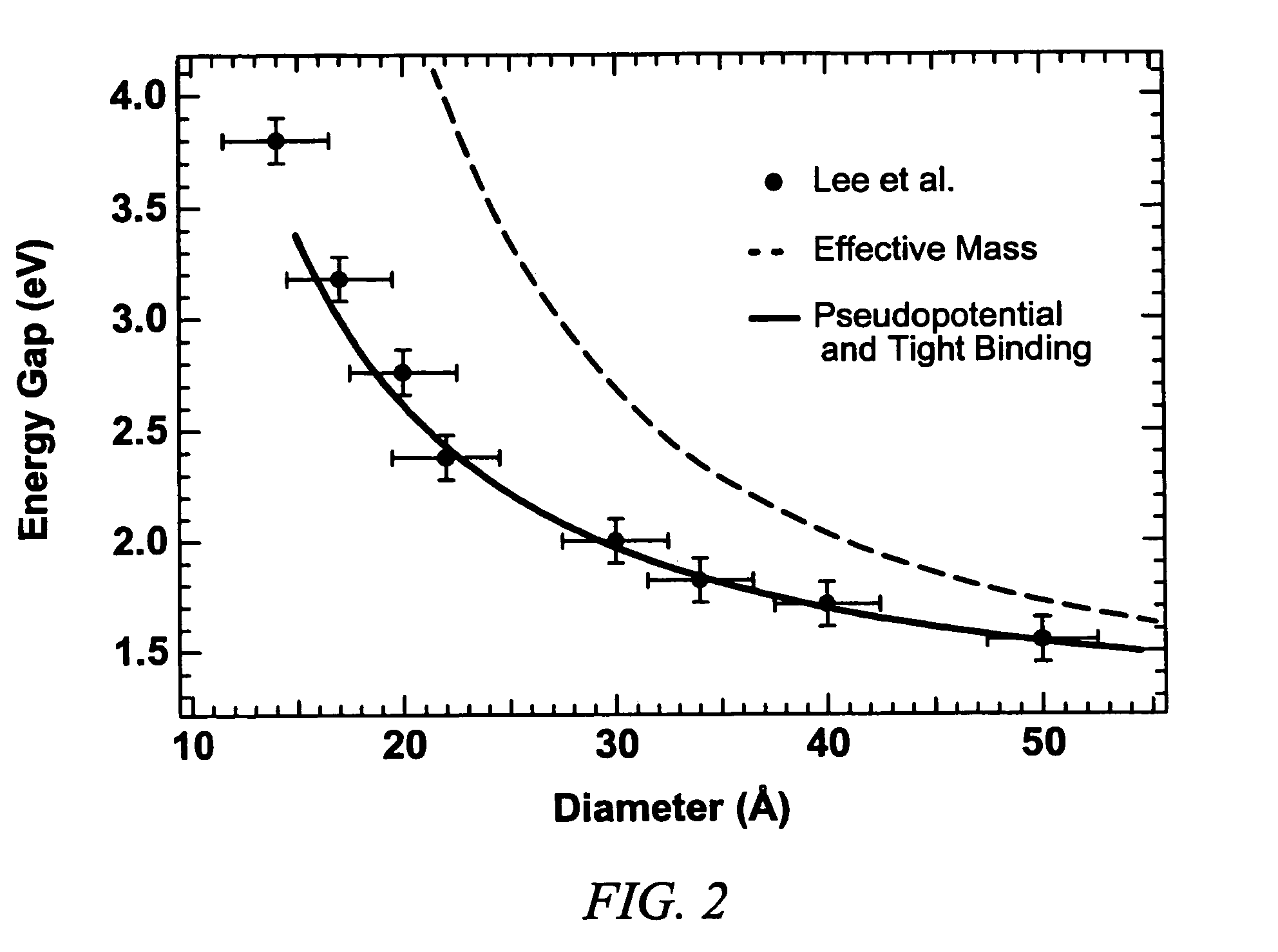Quantum dots of group IV semiconductor materials
a semiconductor material and quantum dots technology, applied in the field of quantum dots, can solve the problems of low yield, increase in energy gap, lack of reproducibility, etc., and achieve the effect of decreasing the overall fom, increasing optical losses, and negative impact on performan
- Summary
- Abstract
- Description
- Claims
- Application Information
AI Technical Summary
Benefits of technology
Problems solved by technology
Method used
Image
Examples
example 1
[0242]A 500-ml three-neck round bottom flask equipped with a stirring bar, a reflux condenser, and a thermometer was purged with argon and charged with 200 ml of the selected solvent (e.g., glymes (n=1 to 5)) and the reducing agent (e.g., magnesium powder, 0.05 to 0.20 mol). Freshly distilled YX4 (0.05 to 0.20 mol) was added dropwise, and the resulting brown-reddish solution was heated to higher temperatures (e.g., between approximately 60 and 280° C.) for a period of time (e.g., between approximately 2 and 100 hrs, typically between approximately 2 and 48 hrs). The resulting mixture was cooled to about −20° C. and treated with an excess amount of the capping agent (e.g., 1.8 M solution of phenyllithium), which was added dropwise to keep the temperature below room temperature. After the reaction mixture was stirred at ambient temperature for a period of time (e.g., between approximately 2 and 48 hrs), it was quenched with dilute protic acid (pH˜2) and extracted with an organic solve...
example 2
[0243]The preparation of Example 1 is repeated using sodium as the reducing agent.
example 3
[0244]The preparation of Example 1 is repeated using barium as the reducing agent.
PUM
| Property | Measurement | Unit |
|---|---|---|
| quantum efficiency | aaaaa | aaaaa |
| quantum efficiency | aaaaa | aaaaa |
| diameter | aaaaa | aaaaa |
Abstract
Description
Claims
Application Information
 Login to View More
Login to View More - R&D
- Intellectual Property
- Life Sciences
- Materials
- Tech Scout
- Unparalleled Data Quality
- Higher Quality Content
- 60% Fewer Hallucinations
Browse by: Latest US Patents, China's latest patents, Technical Efficacy Thesaurus, Application Domain, Technology Topic, Popular Technical Reports.
© 2025 PatSnap. All rights reserved.Legal|Privacy policy|Modern Slavery Act Transparency Statement|Sitemap|About US| Contact US: help@patsnap.com



